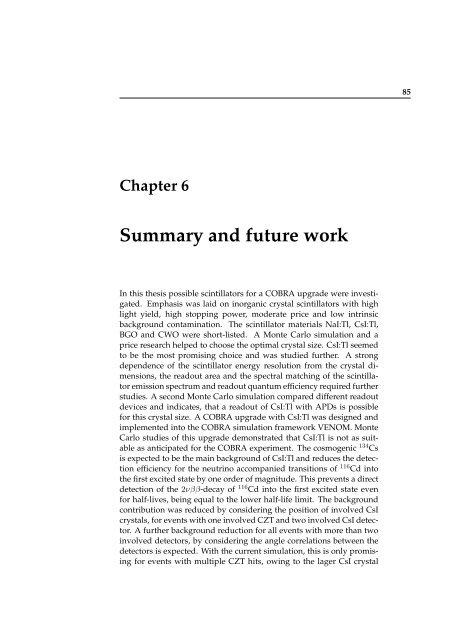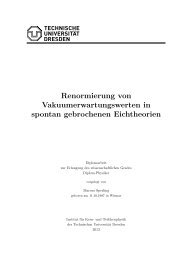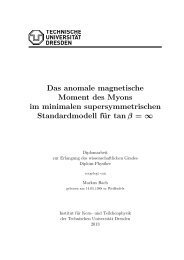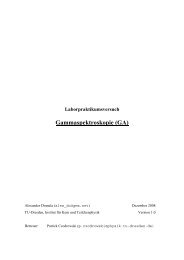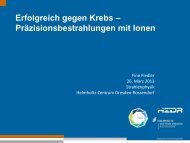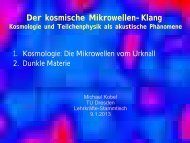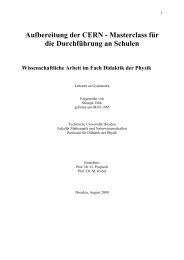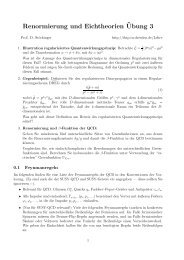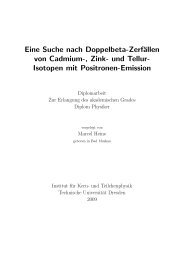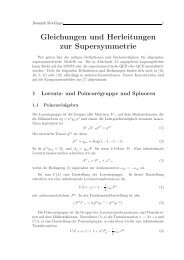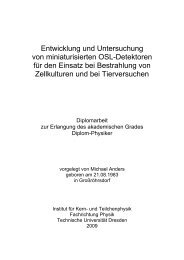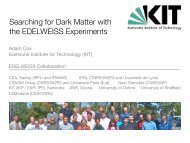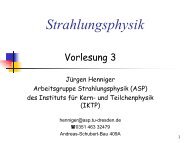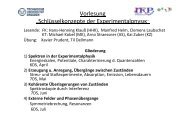a design study for a cobra upgrade to - Institut für Kern- und ...
a design study for a cobra upgrade to - Institut für Kern- und ...
a design study for a cobra upgrade to - Institut für Kern- und ...
You also want an ePaper? Increase the reach of your titles
YUMPU automatically turns print PDFs into web optimized ePapers that Google loves.
Chapter 6<br />
Summary and future work<br />
In this thesis possible scintilla<strong>to</strong>rs <strong>for</strong> a COBRA <strong>upgrade</strong> were investigated.<br />
Emphasis was laid on inorganic crystal scintilla<strong>to</strong>rs with high<br />
light yield, high s<strong>to</strong>pping power, moderate price and low intrinsic<br />
backgro<strong>und</strong> contamination. The scintilla<strong>to</strong>r materials NaI:Tl, CsI:Tl,<br />
BGO and CWO were short-listed. A Monte Carlo simulation and a<br />
price research helped <strong>to</strong> choose the optimal crystal size. CsI:Tl seemed<br />
<strong>to</strong> be the most promising choice and was studied further. A strong<br />
dependence of the scintilla<strong>to</strong>r energy resolution from the crystal dimensions,<br />
the readout area and the spectral matching of the scintilla<strong>to</strong>r<br />
emission spectrum and readout quantum efficiency required further<br />
studies. A second Monte Carlo simulation compared different readout<br />
devices and indicates, that a readout of CsI:Tl with APDs is possible<br />
<strong>for</strong> this crystal size. A COBRA <strong>upgrade</strong> with CsI:Tl was <strong>design</strong>ed and<br />
implemented in<strong>to</strong> the COBRA simulation framework VENOM. Monte<br />
Carlo studies of this <strong>upgrade</strong> demonstrated that CsI:Tl is not as suitable<br />
as anticipated <strong>for</strong> the COBRA experiment. The cosmogenic 134 Cs<br />
is expected <strong>to</strong> be the main backgro<strong>und</strong> of CsI:Tl and reduces the detection<br />
efficiency <strong>for</strong> the neutrino accompanied transitions of 116 Cd in<strong>to</strong><br />
the first excited state by one order of magnitude. This prevents a direct<br />
detection of the 2νββ-decay of 116 Cd in<strong>to</strong> the first excited state even<br />
<strong>for</strong> half-lives, being equal <strong>to</strong> the lower half-life limit. The backgro<strong>und</strong><br />
contribution was reduced by considering the position of involved CsI<br />
crystals, <strong>for</strong> events with one involved CZT and two involved CsI detec<strong>to</strong>r.<br />
A further backgro<strong>und</strong> reduction <strong>for</strong> all events with more than two<br />
involved detec<strong>to</strong>rs, by considering the angle correlations between the<br />
detec<strong>to</strong>rs is expected. With the current simulation, this is only promising<br />
<strong>for</strong> events with multiple CZT hits, owing <strong>to</strong> the lager CsI crystal<br />
85


